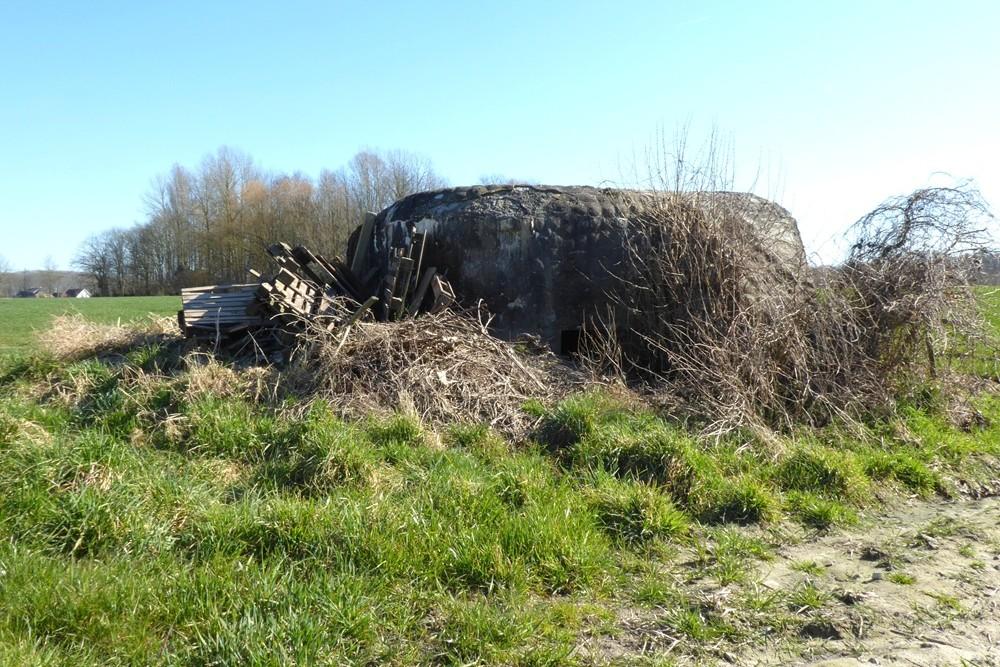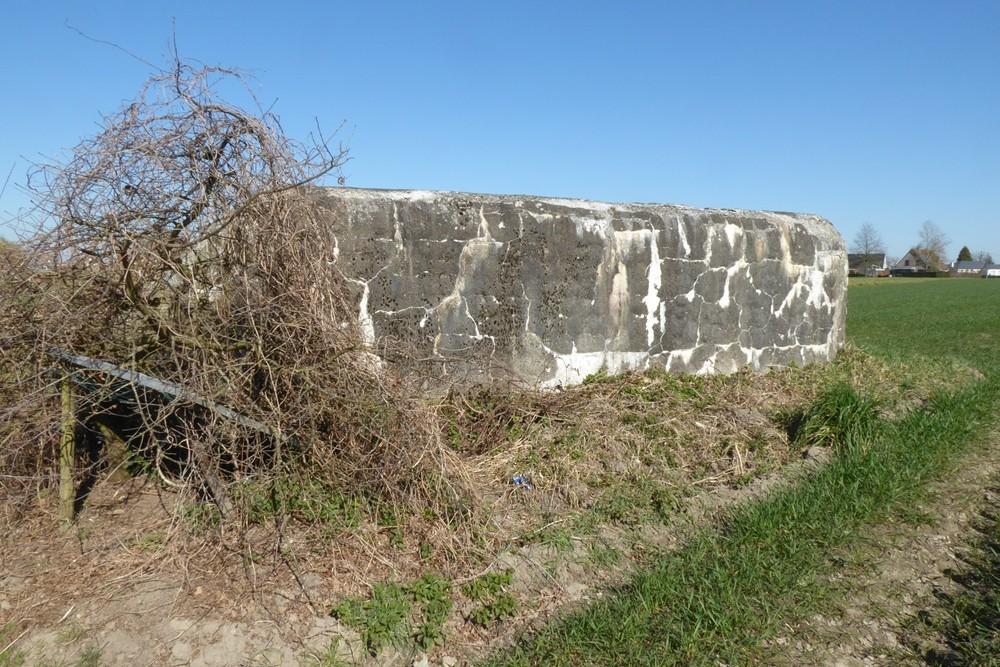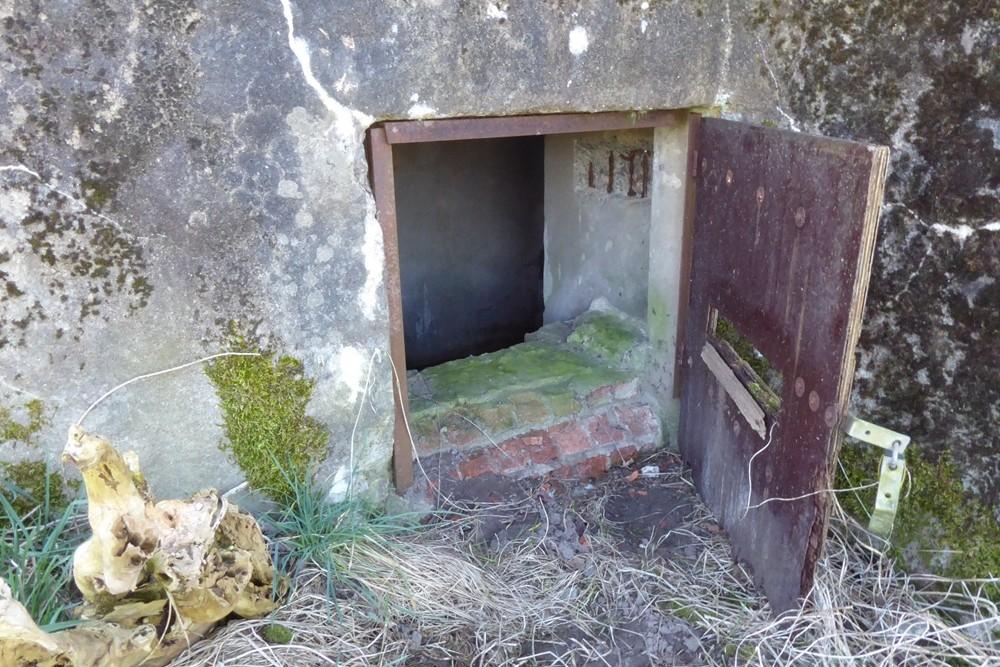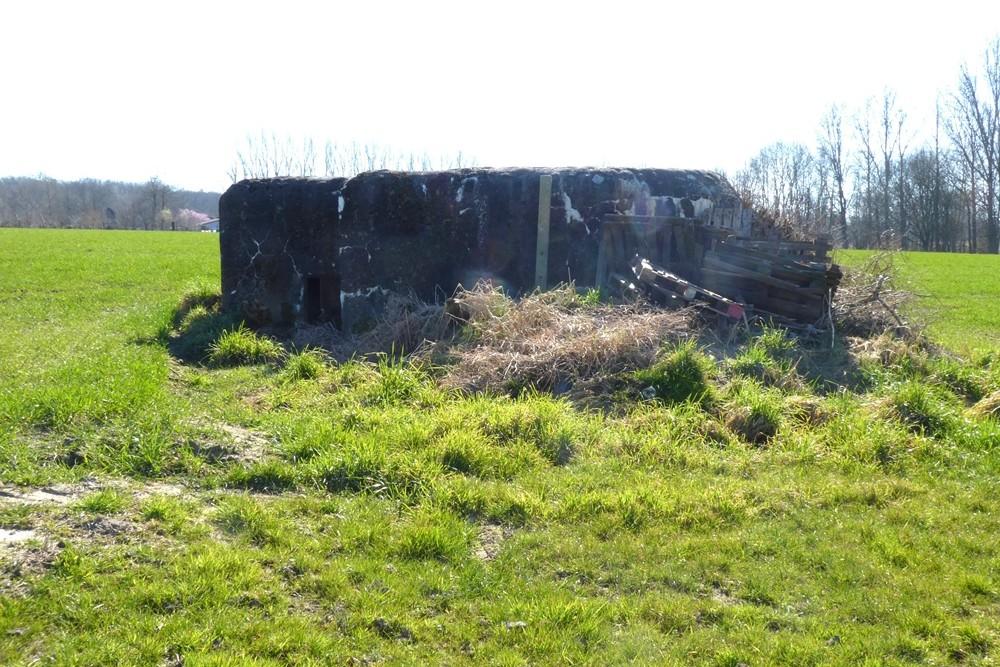Bunker Belt Bruggenhoofd Gent – Rear Line Bunker B20
Belgian bunker, part of the Ghent Bridgehead. This defensive position was constructed between 1934 and 1938, eight kilometres south of Ghent. Its construction was part of the fortification policy that Belgium pursued after the First World War.
The actual bridgehead consisted of two resistance nests – Betsberg and Muntekouter – and three strong points – Semmerzake, Eke and Astene.
The resistance nests and strong points were connected to each other by a curtain consisting of three defence lines.
There are 6 bunkers on the territory of Melsen. Most of them are still visible but sometimes overgrown.
B20 was a rear line bunker between Schelde and Muntekouter between B19 (225 m) and B21 (310 m). It was positioned at an angle to B19 so that together they had a larger field of view and shooting range.
It was a small bunker of the Tyrolien Mamelonné type, originally painted with an ochre yellow base colour with light green and green colour spots on top.
The loophole was hidden behind a metal trapdoor.
The bunker consisted of one room and an access sash.
It was equipped as standard for the installation of a Maxim machine gun but could also install a Hotchkiss or Colt machine gun.
The bunker was completely free, as inconspicuously as possible incorporated into the field. It can be reached via a coulter stroke in Steenakker. In the summer it is sometimes so overgrown that it is practically invisible or inaccessible.
Extensive information about this bunker belt can be found on the site Bunkergordel Bruggenhoofd Gent. It also contains photos, plans and technical data of the bunkers. A map shows the locations per municipality.
Do you have more information about this location? Inform us!
Source
- Text: TracesOfWar
- Photos: Marie-Christine Vinck
Nearby
Point of interest
- Information Board Battle of Gavere Semmerzake - Semmerzake (Gavere)
- Remains Eiserne Halle Scheldewindeke - Scheldewindeke (Oosterzele)
- Former German Airfield Gontrode - Gontrode (Merelbeke -Melle)
Monument
- War Memorial Melsen - Melsen (Merelbeke-Melle)
- War Memorial Vurste - Vurste (Gavere)
- War Memorial Churchyard Vurste - Vurste (Gavere)
Cemetery
- Belgian War Graves Melsen - Melsen (Merelbeke-Melle)
- Belgian Graves Veterans Melsen - Melsen (Merelbeke-Melle)
- Belgian War Grave Vurste - Vurste (Gavere)
Remembrance Stone
- Stumbling Stone Kortrijksesteenweg 890 - Gent
- Stumbling Stone Monterreystraat 63 - Gent
- Stumbling Stone Fortlaan 93 - Gent









